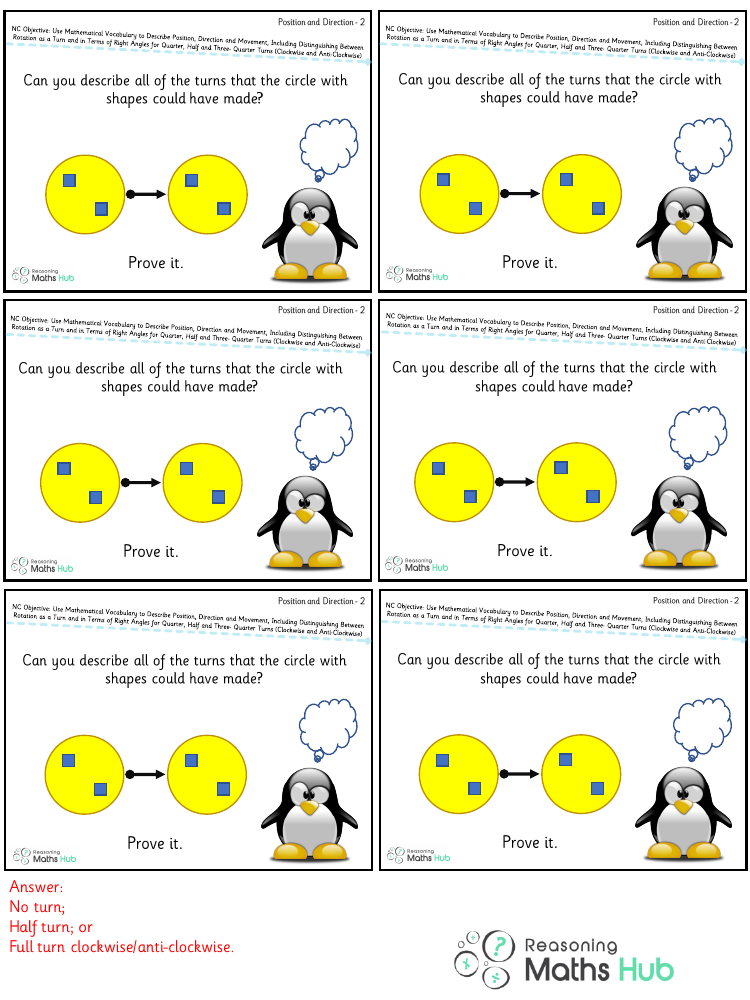Use mathematical vocabulary to describe position, directions and movement - Reasoning

Maths Resource Description
In mathematics, the vocabulary used to describe position, directions, and movement is essential for conveying precise information about the spatial relationships between objects or points. Position refers to the location of an object in space, which can be described using coordinates in a grid system, such as Cartesian coordinates, or through reference to other objects using terms like 'above', 'below', 'next to', 'in front of', 'behind', and 'between'. Directions indicate the path along which something moves or faces, often using the cardinal points (north, south, east, and west) or relative terms such as 'left', 'right', 'upwards', 'downwards', 'clockwise', and 'anticlockwise'.
Movement involves a change in position and can be described using terms like 'translate', which means to move every point of a shape the same distance in the same direction, 'rotate', which involves turning a shape around a fixed point, and 'reflect', which means to flip a shape over a line so that the shape is mirrored. In reasoning tasks, students may be asked to describe transformations using this vocabulary, explain the effect of these movements on the position of a shape, or predict the outcome of a sequence of movements. Understanding and accurately using this mathematical language is crucial for problem-solving and communicating ideas effectively in geometry.